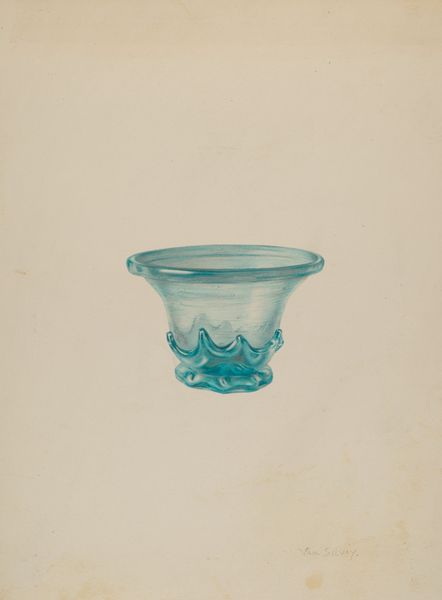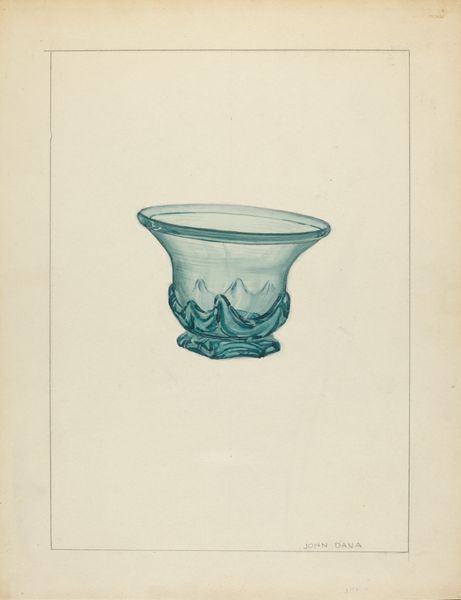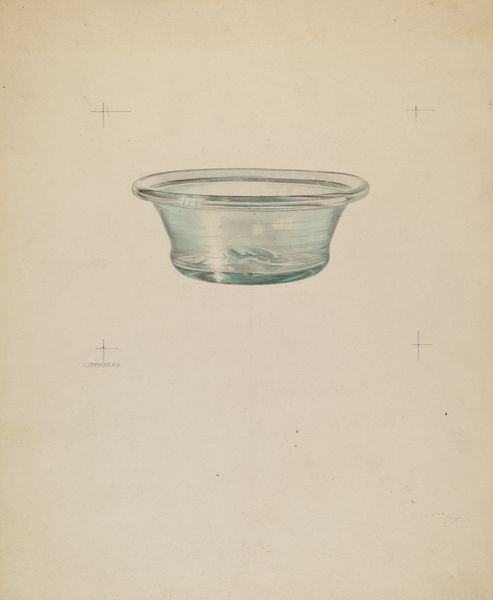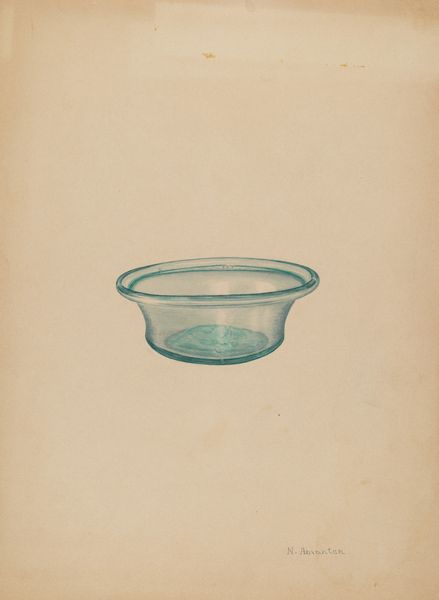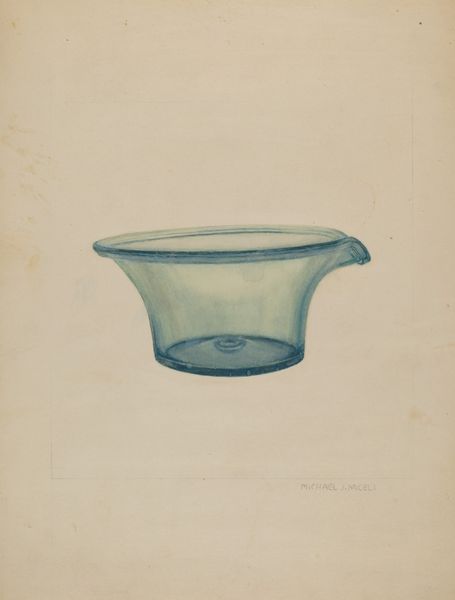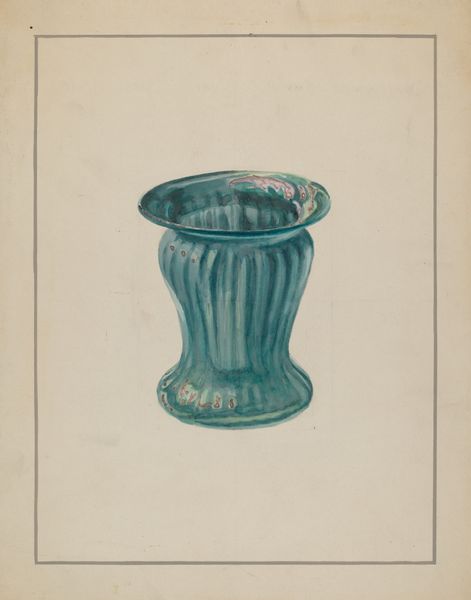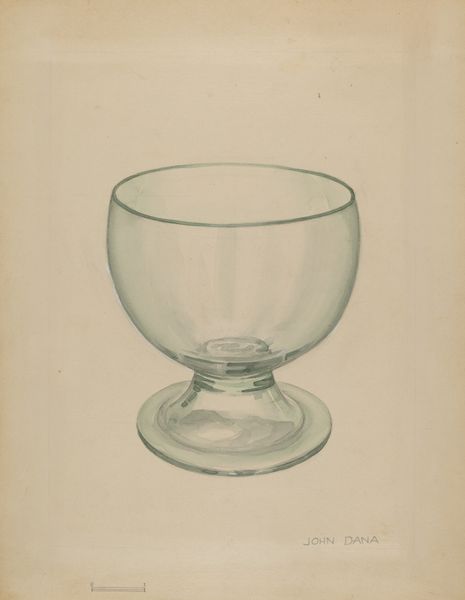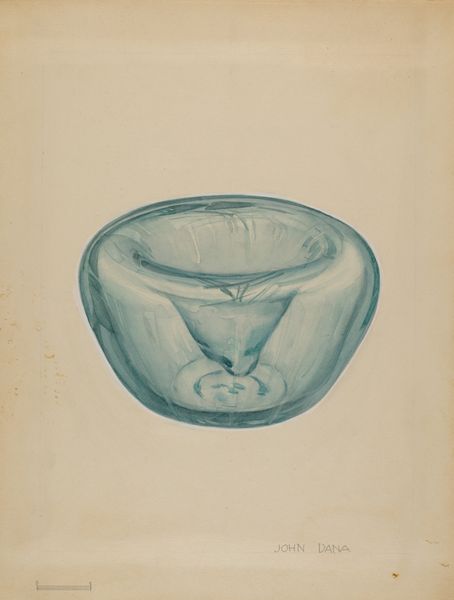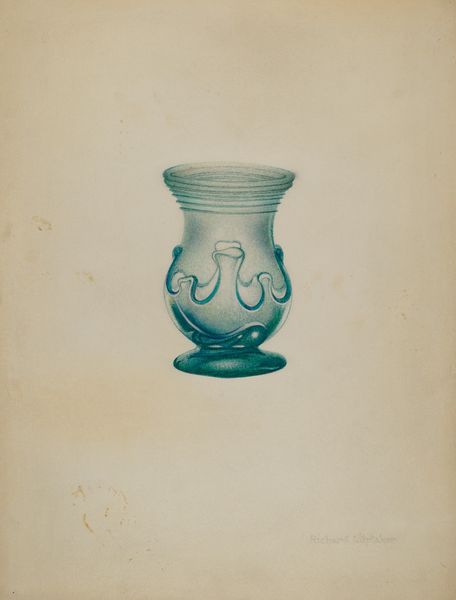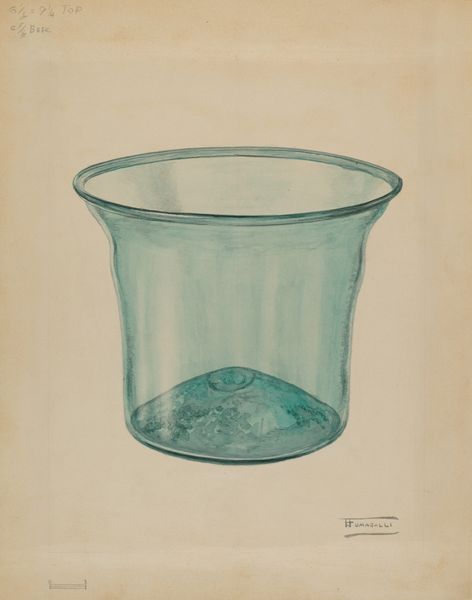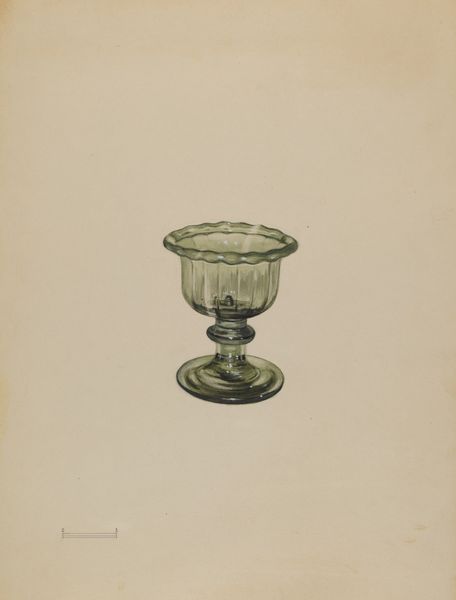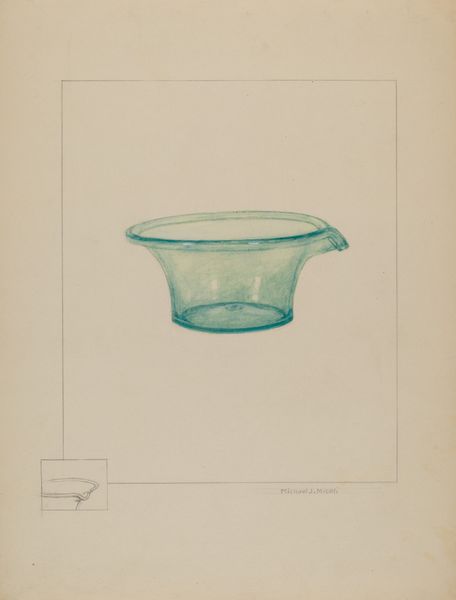
drawing, watercolor
#
drawing
#
watercolor
#
watercolor
#
realism
Dimensions: overall: 29.2 x 22.5 cm (11 1/2 x 8 7/8 in.) Original IAD Object: 2 5/8" high; 5" in diameter
Copyright: National Gallery of Art: CC0 1.0
Curator: Alright, let's dive in. This work, simply titled "Bowl," was created by Alvin Shiren around 1940, using watercolor and drawing techniques. It’s an unassuming yet quite evocative piece. Editor: Evocative is right! My first thought? Ghostly. Not in a spooky way, but in a wispy, ethereal sense. That almost translucent blue-green… like captured moonlight. Curator: That resonates. The artist's choice to depict a common object, like a bowl, prompts us to question the function of still life during this period. Was it merely representational, or were there underlying sociopolitical commentaries at play, especially considering the impending war? Editor: Ooh, I love that reading! The "quiet before the storm," right? And thinking about it…the bowl is empty. It suggests a kind of…waiting. Or a potential for something that hasn't happened yet. I see endless possible futures reflected in its cool surface! Curator: Exactly. This transparency— achieved through watercolor techniques—mirrors the transparency, or lack thereof, within societal structures during the 1940s. There's also the rigid control in form here contrasted to the flow and movement expressed by the washes, symbolizing potential constraint imposed against the fluid nature of humanity itself. Editor: That almost hurts, in a beautiful way! Also, Shiren's mark-making is gorgeous—all those subtle shifts of color, it feels light. Curator: Shiren definitely draws out an unusual harmony. It challenges us to reassess how mundane subjects carry narratives loaded with history and personal memory, a point heightened when you see it within that historical context of global uncertainty and changing social power dynamics. Editor: I am now strangely emotional over this watercolor of a bowl. See, Alvin, you got to me after all this time! Thank you! Curator: Precisely! The simple choice of subject has brought us to consider wider human contexts which can often transform our reading of seemingly passive objects and highlight connections which may be just under the surface.
Comments
No comments
Be the first to comment and join the conversation on the ultimate creative platform.
